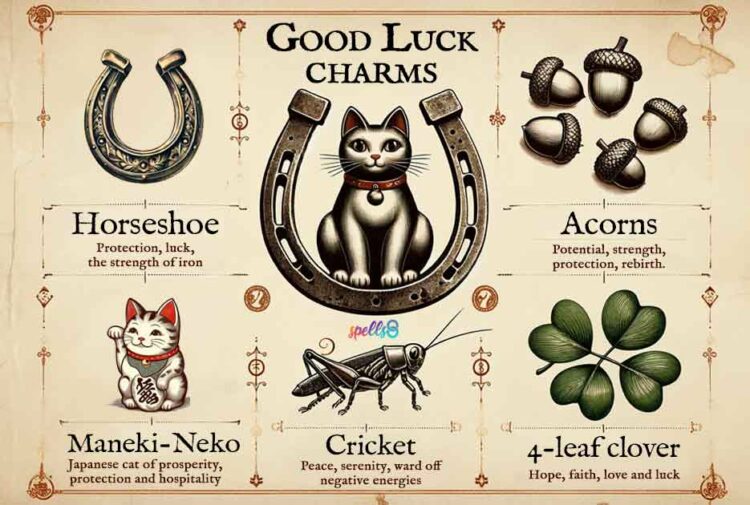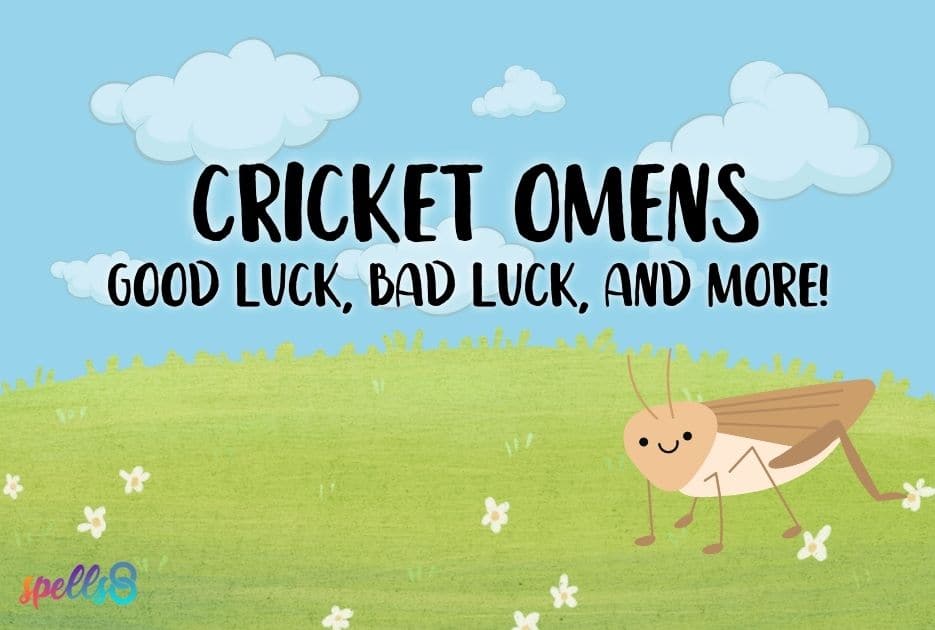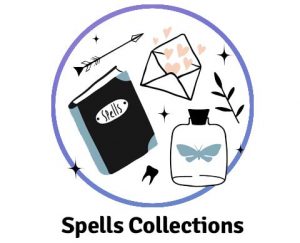Good luck charms have been used by humans around the world for thousands of years. We have constantly sought different ways to change our fate or affect our fortune. From carrying a good luck charm to a job interview to keeping one in your home for household luck, anyone can learn how to use good luck charms to gain the favor of Lady Luck.
Good luck charms are as unique and variable as the people that use them, ranging from simple household objects to cultural symbols. If you are looking to bring some luck into your life or just looking for more information, we have you covered. In this blog post, we will look at six different good luck charms, their history, and how you can choose a good luck charm for yourself!
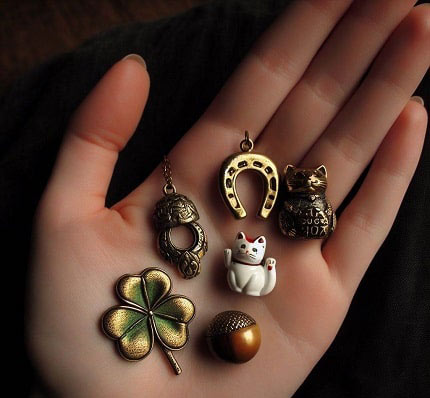
What Makes A Good Luck Charm Lucky?
Since good luck charms have existed for thousands of years, you may be wondering what exactly makes a good luck charm lucky! Well, the answer to that is easy! It usually revolves around superstition, cultural mythology, and folklore from the people who use the charms. These stories are passed from person to person, usually through a family or close group of people. Good luck charms can also hold religious or spiritual meanings. It will vary from person to person.
An item can also be lucky if it was used or worn at a significant time in a person’s life – a pair of lucky socks, anyone? These good luck charms will be unique to the individual and may not carry over for everyone. One person may consider a certain pair of socks to be lucky because they were promoted while wearing them. Others may have lucky figurines or objects they had or bought at a good time in their life.
1. Horseshoes
The luck of a horseshoe has been around for hundreds of years. It is said that you should hang horseshoes horns up for maximum good luck. This is because the shape then acts like a cup, allowing it to fill up with good luck and spill over to anyone that walks underneath it. But where does the story of the horseshoe come from? Well, there are many different theories and no one is completely sure of their origin.
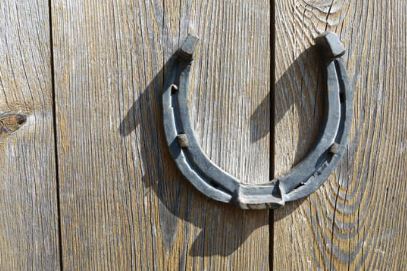
Some say that the Chaldeans (Ancient Mesopotamia) of the eighth century thought the crescent shape of the horseshoe represented various Moon Goddesses, thus protecting them from bad luck. Another possible origin of the lucky horseshoe comes to us from the Middle Ages. In those times, people would hang a horseshoe over their door to ward off witches, witchcraft, and curses.
Much of the folklore we have about lucky horseshoes comes from Ireland. One story, in particular, is very popular. In the 10th century, Saint Dunstan was visited by the Devil himself. At the time, Saint Dunstan was a blacksmith, and the Devil wanted a horseshoe for himself. Saint Dunstan agreed, but rather than letting the horseshoe cool, he nailed a red hot horseshoe to the Devil’s foot. Of course, this made the Devil cry out loudly in great pain, and he begged Saint Dunstan to remove it. Saint Dunstan agreed, but only on the condition that the Devil would respect the horseshoe and never enter any place where there was one hanging above the door. The Devil agreed, and Saint Dunstan removed the horseshoe.
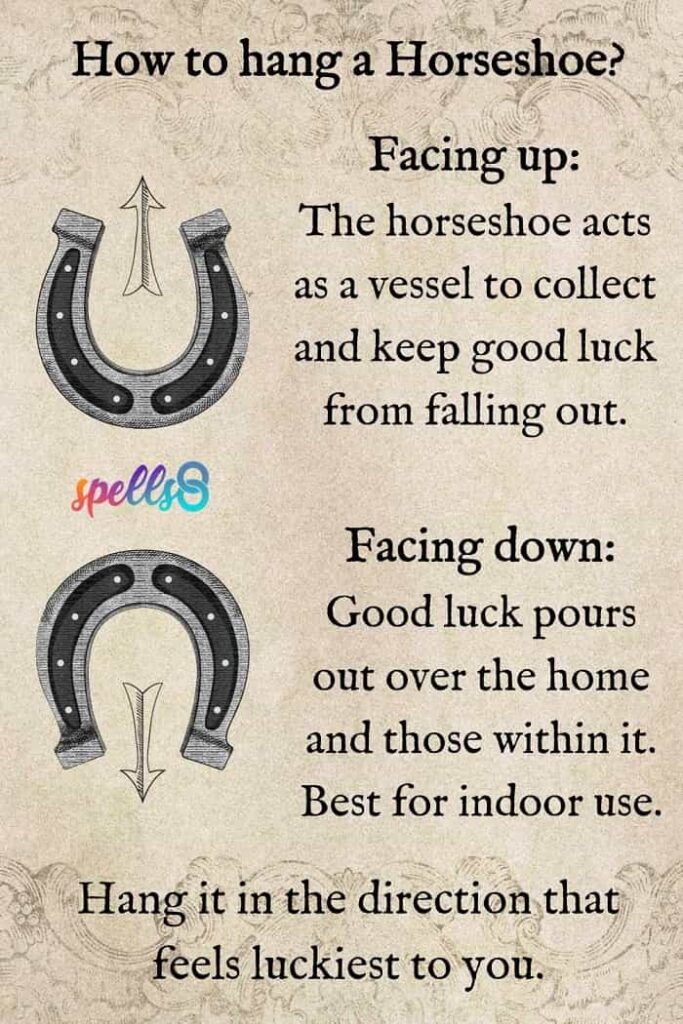
How are you supposed to hang a horseshoe? Up or down?
The practice of hanging a horseshoe for good luck is subject to varied beliefs. Commonly, it is hung with the ends facing up, acting as a vessel to collect and keep good luck from falling out. However, some traditions prefer it facing downward, so luck pours out over the home and those within it.
One last reason the horseshoe may be considered lucky is because of the material it is made from – iron! Iron is a strong, sturdy material, but it also wards against fairies and malicious spirits. Maybe the horseshoe is considered lucky because it keeps the fae away!
Today, lucky horseshoes remain a popular symbol of good fortune. They are often given as gifts during special occasions like weddings and housewarmings. Whether used as decorative pieces or carried as personal amulets, horseshoes continue to embody the enduring belief in luck and protection that has persisted for centuries.
2. Lucky Cat – Maneki-Neko
The Maneki-Neko, also known as the “beckoning cat” or “lucky cat” is an iconic figure in Japanese culture. This paw-raising cat has captured the imagination of people worldwide. But did you know this cat is not actually waving? Instead, it is beckoning, calling you to come toward it. The history of the Maneki-Neko is a fascinating blend of folklore, superstition, and cultural significance.
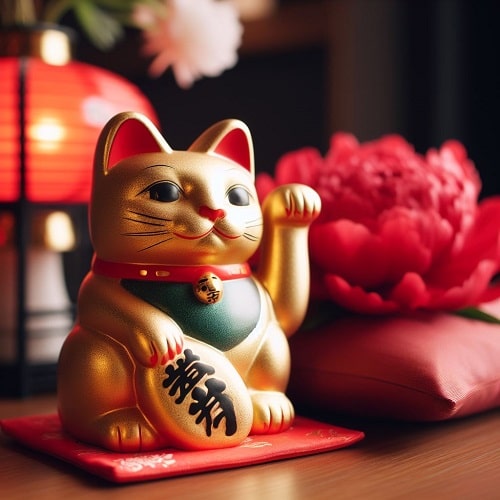
The origins of the lucky cat date back to Japan’s Edo period (17th-19th century). One popular legend tells the tale of a poor temple priest and his cat. In this story, the priest’s cat raises its paw to beckon a passing samurai during a rainstorm. The samurai follows, seeking refuge in the temple, just before lightning strikes exactly where he had been standing. The samurai was grateful for the cat’s timely gesture and became a benefactor, bringing prosperity to the temple. This story of the cat’s life-saving action and the samurai’s generosity have come to be associated with luck and protection. This has contributed to the Maneki-Neko’s image as a bringer of good fortune.
Over time, the symbolism of the lucky cat has evolved. Now, the color of the cat, the raised paw, and the paw’s positioning have come to represent various types of luck and fortune. For example, a raised left paw is said to attract customers and clients, making it popular among businesses. A raised right paw is believed to bring wealth and prosperity. The Maneki-Neko even comes in different colors, each with a different meaning. Gold represents wealth, white represents purity, and black protects against evil.
Today, the Maneki-Neko remains an enduring symbol of Japanese charm and cultural identity. Its influence extends globally, with its symbolism transcending its Japanese roots. Tourists and enthusiasts flock to stores and markets to acquire these figurines, not just as lucky charms, but as expressions of art and culture.
See also: Auspicious Spirits: 🐻 Good Luck Animal Symbols
3. Lucky Acorns
Acorns are also said to be lucky, holding symbolism that is intertwined with different cultural and mythological beliefs. The acorn, a small nut-like fruit of the oak tree, has long been considered a symbol of good fortune and prosperity.
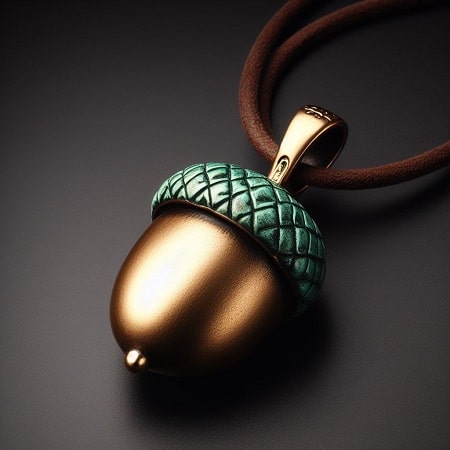
In Norse mythology, the acorn is said to be associated with Thor, the god of Thunder and Lightning. The Norse saw the acorn as protective because of the Oak tree’s ability to withstand mighty storms, thus being able to withstand Thor himself. An acorn would be placed in the home to act as a protective talisman, seeking good luck against storms and danger.
In other ancient cultures, including those of the Greeks and Romans, oak trees were associated with other powerful deities and believed to possess mystical qualities. The acorn, as a product of the oak tree, came to be seen as a representation of potential, growth, and rebirth. This symbolism led to the belief that carrying or possessing an acorn could bring luck and protection.
Native American culture also holds the acorn in high regard. Before the colonization of North America, the acorn was a staple in the diets and lives of many Native American nations. This importance was often reflected in their myths and ceremonies, and for many of these nations, the acorn symbolizes sustenance, growth, and the interconnectedness of nature.
Today, the concept of lucky acorns endures in different forms. They might be carried as pocket charms, worn as jewelry, or displayed in homes as symbols of luck and positive energy. Acorns continue to be featured in art and design, and their timeless symbolism resonates with people seeking to embrace a sense of hope, growth, and fortune.
4. Four-Leaf Clovers
The origins of lucky four-leaf clovers are rooted in a rich tapestry of ancient beliefs, Celtic folklore, and enduring symbolism. The four-leaf clover, a rare variation of the common three-leaf clover, has captured the human imagination for centuries as a symbol of good luck and fortune.
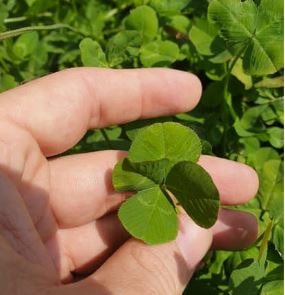
In Celtic tradition, the shamrock, a three-leaf clover, held special significance long before the four-leaf clover emerged as a lucky emblem. Some believe that the Druids would carry a shamrock with them to help see evil spirits. The number three was also significant to the Druids, signifying the three planes of existence, as well as the three stages of life. When St. Patrick came to Ireland, it is said that he used the shamrock to explain the concept of the Holy Trinity, solidifying its importance in Celtic cultures.
Throughout history, the four-leaf clover gained popularity as a lucky charm. It was thought to bring good fortune to those who found it, and people began to carry them as talismans for protection and prosperity. The symbolism of each leaf — hope, faith, love, and luck — deepened its significance, making it a sought-after token in various cultures around the world.
5. Crickets
Crickets are considered lucky in various cultures due to their positive associations with peace, serenity, and prosperity. The symbolism of crickets as bringers of good luck can be traced back to ancient times and has been perpetuated through folklore and cultural beliefs.
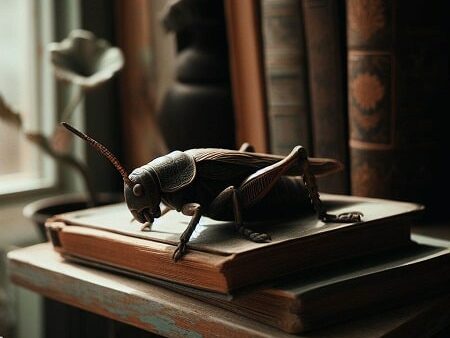
In many cultures, crickets are associated with tranquility and calmness. The gentle, rhythmic chirping of crickets during warm evenings can create a soothing ambiance that’s often associated with a sense of peace and well-being. This peaceful sound has led to the belief that encountering crickets or hearing their chirping is a positive omen.
In some Asian cultures, crickets are considered symbols of good fortune and are even kept as pets. The Chinese culture, for example, holds crickets in high regard. Historically, they were kept in small cages for their melodious chirping, believed to attract wealth and ward off negative energies. Crickets were also associated with perseverance, as their persistent chirping even in negative conditions was seen as a trait to be admired.
Choosing a Good Luck Charm
Now that you know a little bit about good luck charms, it is time to choose one for yourself! Will you choose one from above or one of your own significance? When selecting a good luck charm, it is essential to understand the symbolism behind the charm. Trust your intuition and choose the charm best for you!
Cricket Omen: The Spiritual Meaning of the Cricket Song
For many people the presence of particular animals and plants has a deep spiritual meaning, and no more so than the cricket. Crickets have existed on Earth for over 200 million years and have been valued by cultures around the globe for their spiritual significance and symbolism.
Spells For Good Fortune: Rituals & Recipes To Create Your Own Luck
Sometimes we all need a little extra luck in our lives! Whether it’s finding a little extra cash in your pocket to improve your finances, a confidence boost before an important meeting, or just a ray of sunshine on a cloudy day.
Good Luck Sigil Step-by-Step: How to Craft and Activate It
In this post, you will discover what sigils are and how to make a good luck sigil. If you are wondering what other types of sigils you can make, well it all depends on your intent. You can make a protection sigil, a love sigil, a prosperity sigil, and so on.

